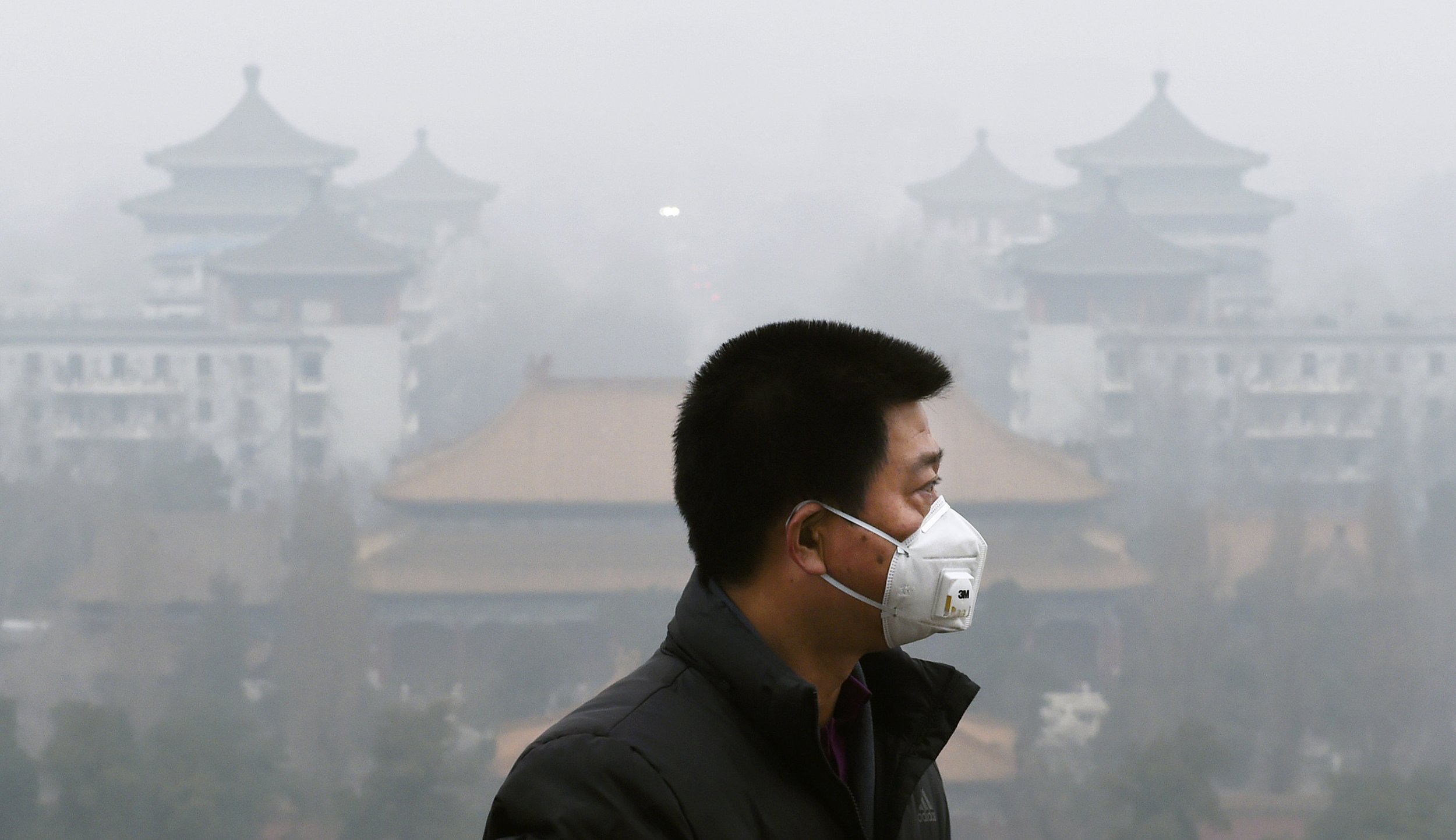COP26: China Adopts Green, Low-Carbon Approach
مؤتمر تغير المناخ: الصين تتبنى نهجا أخضر منخفض الكربون
QNA
Doha: From global warming to desertification, drought, floods, hurricanes and forest fires, the world is facing a climate crisis and as technology develops and awareness increases across the globe, people are intensifying their efforts to address these challenges, and China, the world’s second-largest economy, believes that the international community is now at a crossroads that need to come together more than ever before to meet challenges and achieve common development.
As the world’s largest developing country, with a population of more than 1.4 billion, China has adopted a number of policies, measures and actions to address climate change and engage with the international effort in this regard, despite the difficulties it creates for its economic and social development, which have yielded positive results in many sectors.
At the 75th and 76th sessions of the UN General Assembly (UNGA), Chinese President Xi Jinping announced that China will strive to peak its CO2 emissions before 2030 and achieve carbon neutrality before 2060, end all funding for coal-fired power projects abroad and redirect its support in developing green and low-carbon energy, and President Xi stressed that the task was very difficult, “but China will keep its pledge.”
Since 2012, China has made responding to climate change a higher policy priority, steadily reduced the intensity of carbon emissions, strengthened its efforts and efforts to mitigate the effects of climate change, adopted a green and low-carbon approach to its economic and social development, and worked to build a modern state in which man and nature coexist in peace and harmony.
In this context, China has the philosophy that development must be innovative, coordinated, green and shared, based on five axes, which, in its entirety, require that green development is a necessary condition for sustainability and represents the aspirations of the people for a better life, a key guide to China’s climate action.
To achieve its goals of responding to climate change, China has risen to challenges, formulated and implemented a variety of strategies, regulations, policies, standards, and actions, but it takes nearly 30 years of effort to reach the desired targets to move from peak carbon emissions to carbon neutrality and the largest reduction in carbon dioxide emissions in the world.
China has established a national leadership group headed by the premier and officials from 30 ministries, whose mission is to follow up on the response to climate change, conserve energy, and reduce emissions.
China has invested heavily in seven campaigns to keep with the “Action Blue Sky Campaign,” Action Plan for Battle Against Diesel Truck Pollution, protect and restore the Yangtze River ecosystem, improve the water environment of the Bohai Sea region, protect water sources and control pollution in agriculture and rural areas.
China has developed systematic and science-based strategies in agricultural, environmental, urban and other fields, and prepared a plan for national strategic emerging industries to guide green consumption, promoting green products, increasing the proportion of new energy vehicles and new energy use, with an emphasis on innovation and application of green and low-carbon technologies.
It has taken a coordinated approach to manage mountains, rivers, forests, farmland, grasslands, lakes, and deserts. It has rigorously implemented related measures to enhance its natural carbon sequestration and storage capabilities.
China has also strengthened water conservation infrastructure, improved the allocation of water resources to prevent floods and droughts, and launched measures to promote a healthy environment. By the end of 2020, China has established 474 national nature reserves, representing more than a tenth of its landmass. It has also cultivated 53.3 million hectares of high-quality farmland, restoring 1,200 km of coastline and 23,000 hectares of coastal wetlands to better preserve and prepare ecosystems to play their role as biological carbon sinks.
At the same time, China provides assistance and support within its capabilities to other developing countries in coping with climate change, and participates in South-South cooperation on climate change with other developing countries, and has done its best to help those countries, especially small island states, least developed countries and African countries, to build capacities to combat climate change and reduce its negative effects.
Being the world’s largest manufacturer of clean energy equipment, China is actively working towards a global transition to green and low-carbon energy, by participating in extensive cooperation in the field of renewable energy. China is also the largest market for renewable energy, and the large-scale application of renewable energy technologies in the Chinese market helps reduce the cost of green resources around the world and accelerate the transition to a new form of energy.
China aims to reduce the share of coal in its energy consumption to less than 56 percent this year and intends to continue replacing coal in final energy consumption with electricity equivalent to 200 billion kilowatt-hours, saying that it will strengthen control over the total consumption of coal, push forward the efficient and clean use of it, and make efforts to promote the use of clean energy for heating in more than seventy percent of homes in its northern regions. It will explore the use of clean heating in the southern part of the country.
China also applied green energy-saving subsidies for household appliances and new-energy vehicles in recent years. In 2020, sales of new energy vehicles exceeded 1.3 million, an annual increase of more than ten percent.
قنا
الدوحة: من الاحتباس الحراري إلى التصحر والجفاف والفيضانات والأعاصير وحرائق الغابات ، يواجه العالم أزمة مناخ، ومع تطور التكنولوجيا وازدياد الوعي في أنحاء الكرة الأرضية، يكثف البشر جهودهم للتصدي لهذه التحديات ، وترى الصين ، ثاني أكبر اقتصاد بالعالم ، أن الأسرة الدولية تقف اليوم على مفترق طرق يجعلها بحاجة للتكاتف أكثر من أي وقت مضى، لمواجهة التحديات وتحقيق التنمية المشتركة.
وكأكبر دولة نامية في العالم ، من حيث عدد السكان الذي يزيد على مليار وأربعمائة مليون نسمة، تبنت الصين عددا من السياسات والتدابير والإجراءات لمعالجة تغير المناخ والمشاركة مع الجهد الدولي بهذا الصدد ،على الرغم من الصعوبات التي يخلقها ذلك لتنميتها الاقتصادية والاجتماعية، وقد حققت هذه الجهود نتائج إيجابية في الكثير من القطاعات.
وأمام الدورتين الخامسة والسبعين والسادسة والسبعين للجمعية العامة للأمم المتحدة، أعلن الرئيس الصيني شي جين بينغ أن بلاده ستسعى جاهدة لتحقيق هدفي بلوغ ذروة انبعاثات ثاني أكسيد الكربون قبل عام 2030 ، وتحقيق تحييد الكربون قبل 2060، وستنهي كل تمويل لمحطات الطاقة التي تعمل بالفحم في الخارج وستعيد توجيه دعمها إلى الطاقة الخضراء ومنخفضة الكربون، وأكد الرئيس شي أن المهمة صعبة للغاية، “لكن الصين ستفي بوعدها”.
ومنذ عام 2012 ، جعلت الصين الاستجابة لتغير المناخ أولوية أعلى في سياستها ، وخفضت بشكل مطرد كثافة انبعاثات الكربون ، وعززت جهودها ومساعيها للتخفيف من آثار التغيرات المناخية ، وتبنت نهجاً أخضر ومنخفض الكربون في تنميتها الاقتصادية والاجتماعية ، وعملت على بناء دولة حديثة يتعايش فيها الإنسان والطبيعة في سلام ووئام.
وتنتهج الصين في هذا السياق، فلسفة مفادها أن التنمية يجب أن تكون مبتكرة ومنسقة وخضراء ومشتركة، وتقوم على خمسة محاور تقضي بمجملها بأن التنمية الخضراء تعد شرطاً ضرورياً للاستدامة، وتمثل تطلعات الشعب لحياة أفضل ، وهي دليل رئيسي للإجراءات المناخية في الصين.
ولتحقيق أهدافها في الاستجابة لتغير المناخ ، ارتقت الصين إلى مستوى التحديات وصاغت ونفذت مجموعة متنوعة من الاستراتيجيات واللوائح والسياسات والمعايير والإجراءات، لكن الوصول للأهداف المنشودة يستغرق ما يقرب من 30 عاماً من الجهود للانتقال من ذروة انبعاثات الكربون إلى تحقيق الحياد الكربوني وأكبر انخفاض من انبعاثات ثاني أكسيد الكربون في العالم.
وقد أنشأت الصين مجموعة قيادية وطنية برئاسة رئيس مجلس الدولة ومسؤولين من 30 وزارة ، تتمثل مهمتها بمتابعة الاستجابة لتغير المناخ ، والحفاظ على الطاقة ، وتقليل الانبعاثات .
واستثمرت الصين جهوداً كبيرة في سبع حملات لإبقاء “السماء زرقاء”، والسيطرة على التلوث الناجم عن شاحنات الديزل ، وحماية واستعادة النظام البيئي لنهر اليانغتسي ، وتحسين البيئة المائية لمنطقة بحر بوهاي ، وحماية مصادر المياه والسيطرة على التلوث بالزراعة والمناطق الريفية.
ووضعت الصين استراتيجيات منظمة وقائمة على العلم في المجالات الزراعية والبيئية والحضرية وغيرها، وأعدت خطة للصناعات الاستراتيجية الوطنية الناشئة بهدف توجيه الاستهلاك الأخضر، والترويج للمنتجات الخضراء وزيادة نسبة مركبات الطاقة الجديدة والاستخدام الجديد للطاقة ، مع التركيز على الابتكار وتطبيق التقنيات الخضراء ومنخفضة الكربون.
واتخذت نهجاً منسقاً لإدارة الجبال والأنهار والغابات والأراضي الزراعية والعشبية والبحيرات والصحاري ، ونفذت بصرامة التدابير ذات الصلة لتعزيز قدراتها الطبيعية على امتصاص وتخزين الكربون.
كما عززت الصين البنية التحتية للحفاظ على المياه، وحسنت تخصيص موارد المياه لمنع الفيضانات والجفاف، وأطلقت الصين إجراءات لتعزيز البيئة الصحية ، وبحلول نهاية عام 2020 ، أنشأت الصين 474 محمية طبيعية وطنية، تمثل أكثر من عشر كتلة أراضيها، كما قامت بزراعة 53.3 مليون هكتار من الأراضي الزراعية عالية الجودة ، واستعادت 1200 كم من الساحل و 23000 هكتار من الأراضي الرطبة الساحلية، بهدف الحفاظ على النظم البيئية بشكل أفضل وتهيئتها للعب دورها كبالوعات بيولوجية للكربون.
في الوقت نفسه تقدم الصين المساعدة والدعم في حدود إمكانياتها للدول النامية الأخرى لمواجهة تغير المناخ، كما تشارك في التعاون بين بلدان الجنوب بشأن تغير المناخ مع البلدان النامية الأخرى، وقد بذلت قصارى جهدها لمساعدة تلك البلدان، ولا سيما الدول الجزرية الصغيرة وأقل البلدان نموا والبلدان الأفريقية ، لبناء القدرات لمكافحة تغير المناخ والحد من آثاره السلبية.
وتعمل الصين /كونها أكبر مصنع لمعدات الطاقة النظيفة في العالم/، بشكل فعال نحو تحول عالمي إلى طاقة خضراء ومنخفضة الكربون، عن طريق المشاركة في تعاون مكثف بمجال الطاقة المتجددة، وتعد الصين أيضا أكبر سوق للطاقة المتجددة، ويساعد التطبيق واسع النطاق لتكنولوجيات الطاقة المتجددة بالسوق الصينية في تقليل تكلفة الموارد الخضراء في جميع أنحاء العالم وتسريع عملية التحول إلى شكل جديد من الطاقة.
وتهدف الصين لخفض حصة الفحم في استهلاك الطاقة لديها إلى أقل من 56 بالمائة هذا العام، وتعتزم مواصلة استبدال الفحم في الاستهلاك النهائي للطاقة بكهرباء تعادل 200 مليار كيلوواط ساعة، وتقول إنها ستعزز السيطرة على اجمالي استهلاك الفحم، وستدفع للأمام سبل الاستخدام الفعال والنظيف له، وستبذل جهوداً لتعزيز استخدام الطاقة النظيفة للتدفئة في أكثر من سبعين بالمائة من المنازل بمناطقها الشمالية، وستقوم باستكشاف استخدام التدفئة النظيفة في الجزء الجنوبي من البلاد .
كما طبقت الصين دعماً لتوفير الطاقة الخضراء للأجهزة المنزلية ودعماً لسيارات الطاقة الجديدة خلال السنوات الأخيرة، وتجاوزت مبيعات سيارات الطاقة الجديدة عام 2020، 1.3 مليون سيارة، بزيادة سنوية تتجاوز عشرة بالمائة.




